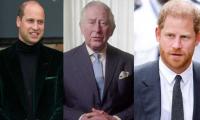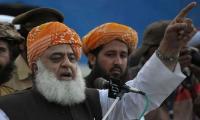Poet Muhammad Iqbal visited Spain and prayed in the old mosque of Cordoba in 1933 where he wrote his famous poem ‘Majid-e-Qartaba’. Gen Ziaul Haq visited Kashghar in 1984. He requested the local Chinese authorities to unlock the big Friday Mosque in the city – it had been sealed for a long time – and offered prayers there with local Muslims.
In February 2009, Qazi Hussain Ahmed of the Jamaat-e-Islami prayed in Xi’an, a city in the Shaanxi province. He was allowed to offer prayers and make a speech in the oldest mosque in China. Xi’an is the first city of China that came into contact with Islam. The Muslims in the city are from the ethnic Hui group, which is well integrated in China. And Xi’an is also nearer to the development model envisioned by reformist Islamists. Since the 1990s, the city has been part of the economic revival for central and northwest regions. It is also an industrial hub.
The visit of the JI delegation was significant and coincided with events taking place globally. The UN Security Council had declared the Jamaat-ud-Dawa a terrorist group and four of its leaders had been listed as terrorists in December 2008. This time China did not bar the resolution. The JI was under enormous pressure as Al-Qaeda leaders had been arrested from houses of JI members. The JI was informed that India and the US could put forward a resolution against the party too in the UNSC. Only China would come to the rescue and counter the resolution if the JI leadership clarified their position to the Chinese – especially regarding their alleged links to terrorist groups from the East Turkestan Movement, and Kashghari and Uyghur Muslims.
Ideologically, there is a meeting of the minds between China and the JI over the Uyghur unrest: both see the issue from an ethnic perspective. China’s counterterrorism strategy is ethnic – based on the tumultuous and restive Xinxiang region. And there are reasons for that. Hui Muslims are more integrated in mainstream China compared to the separatist Uyghurs, who see the Han majority Chinese as usurpers who are growing in great numbers.
The JI is ideologically and politically against the nationalists’ separatist ideology and ethnic politics. On the eve of the civil war in the then East Pakistan, the JI organised militant groups Al Badr and Al Shams to counter the Bengali separatists.
It is fashionable in journalistic writings to link the JI to the Taliban and Al-Qaeda. On the contrary, academics views and opinions on Islamic movements are diverse, overlapping, and contradictory. Islamic movements are neither monolithic nor has any ahistorical study provided any real sense of what we call the ‘cooperating and resistant’ of Islamism. Nonetheless, these movements have transformed in unprecedented ways since 9/11. The rural poor did rally behind the MMA in 2001. But very soon they parted ways with middle class leaderships and organised under the banner of the Taliban in the Pakhtun belt.
The JI is socially concentrated in the middle classes: it is as opposed to big capital as it dislikes the rural poor. The confusion arises when the JI leadership tries to mediate, and sometimes vacillates between big capital and the rural poor. So the party appears confused on military operations against Islamists and terrorism associated with Islamists.
Despite its rhetoric, the JI is nationalistic in nature. When the Pakistani ruling classes are divided on issues such as Balochistan or the Taliban, the JI has the opportunity to take sides with oppressed or pro-people movements – like the Lawyers Movements. On China, the JI policy has reflected Pakistan’s military and strategic interests: Both China and the JI supported the Afghan Jihad in the 1980s, both were against the Stalinist communist regimes in the 1960s, both in one way or the other agree with various movements in India.
During their visit to China, the JI delegation inked an agreement with the ruling communist party in China. The agreement can be seen as an apology for the JI’s past strategy of supporting militant Islamists. The JI strongly denounced the separatist movements in China and also said that it backed the ‘One China’ claim.
Ignoring the oppression and plight of Muslims in China, Qazi Hussain rhetorically said: “There is an ideological vacuum in China and we must fill this vacuum”. He also denied that, by visiting communist China and signing an agreement, the JI had departed from its ideological position: “...this not deviation from our ideology. In fact, the Chinese have deflected from Leninism and Communism, and embraced the ideals of market economy.” He was partly true: both the JI and China deviated from their ideologies.
Unlike Iqbal who envisaged a return of Muslim glory to Spain once again and Gen Zia who visited the Muslim Xinjiang and prayed in the big mosque, Qazi Hussain and his delegation preferred to visit Shanghai, the biggest hub of market capitalism and mega city, and Beijing the capital of communist China. The Chinese position is aptly summarised by Alice Su in an article in FP: “China doesn’t mind Islamic extremists, as long as they’re not Uyghur.’
This article is the final part of the ‘Before CPEC’ series by the writer: published on March 28, 2017 and April 3, 2017.
The writer is an independent researcher. Email: sartaj2000@yahoo.com
The cases of Attabad Lake and Gwadar simply highlight the many tragedies that exist around the country
Reaffirming loyalty to democracy as a problem solver can be a good starting point
Unfortunately, Pakistani films and TV dramas have seldom ventured beyond domestic intrigues and love triangles
A woman walks past a building of the International Monetary Fund. — AFP/FileThe annual and spring meetings of the...
Late Benazir Bhutto's daughter Asifa Bhutto Zardari addresses the Christian community in Bihar Colony on January 23,...







